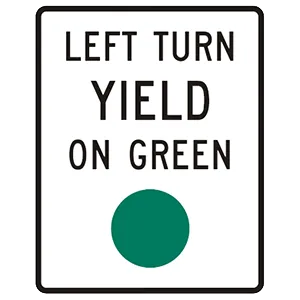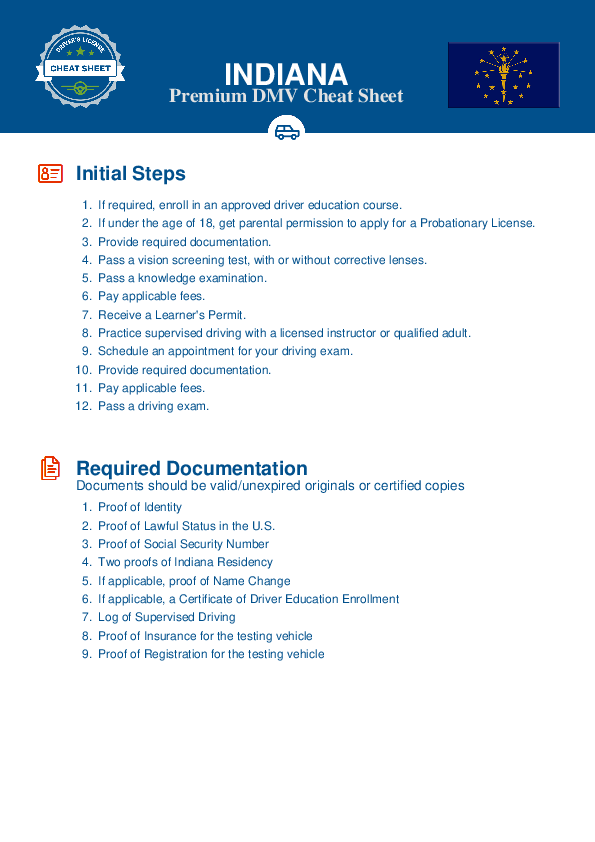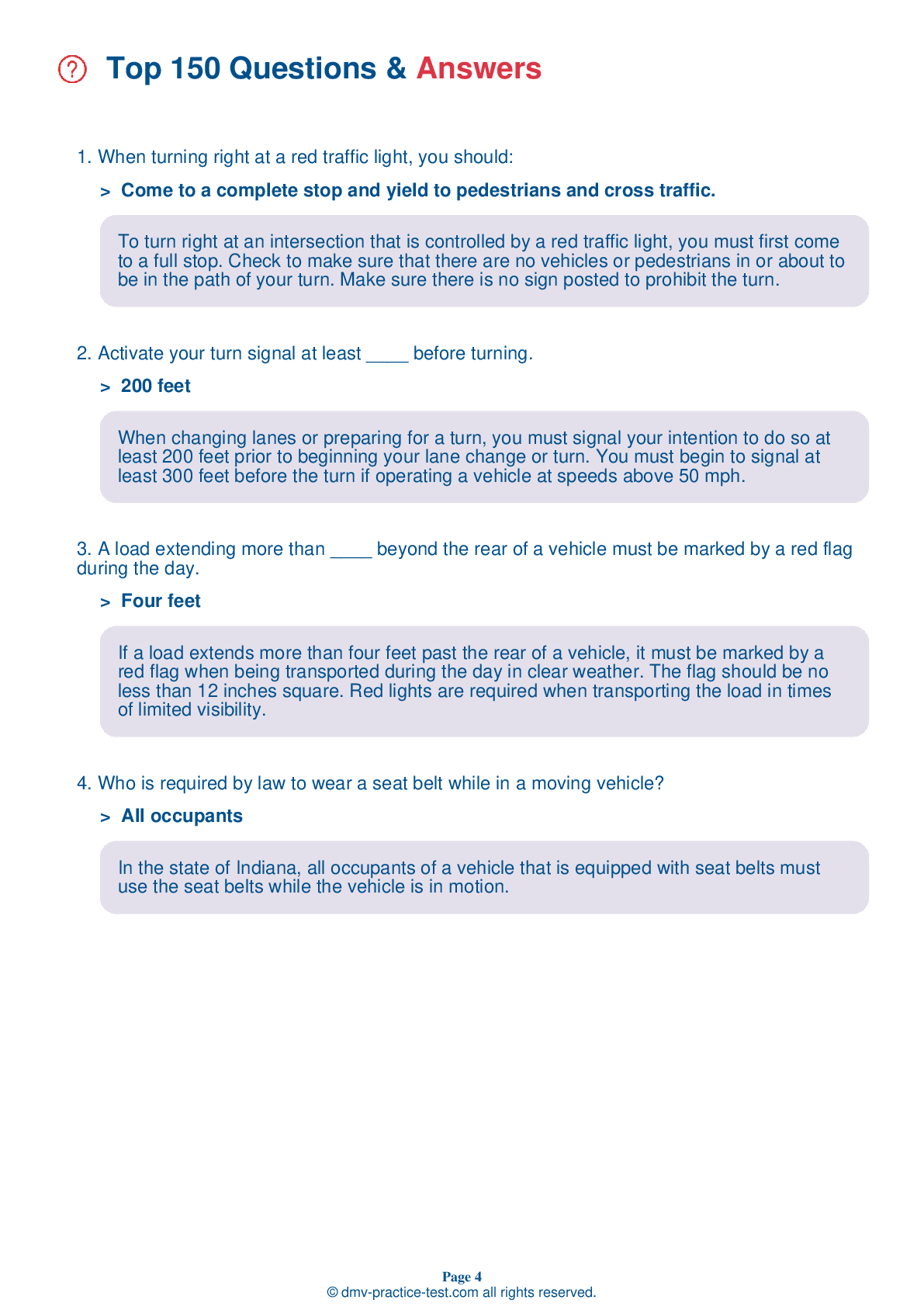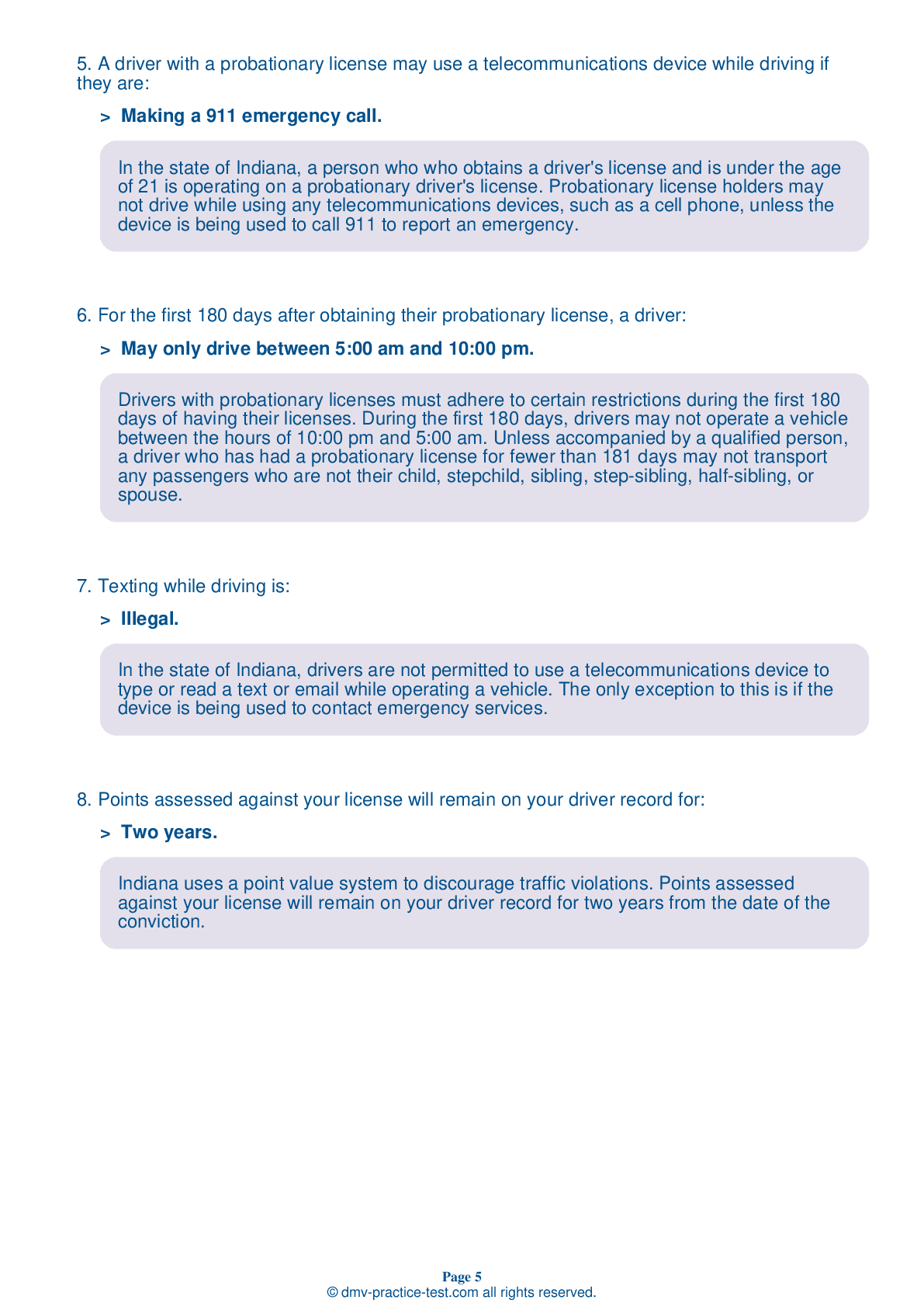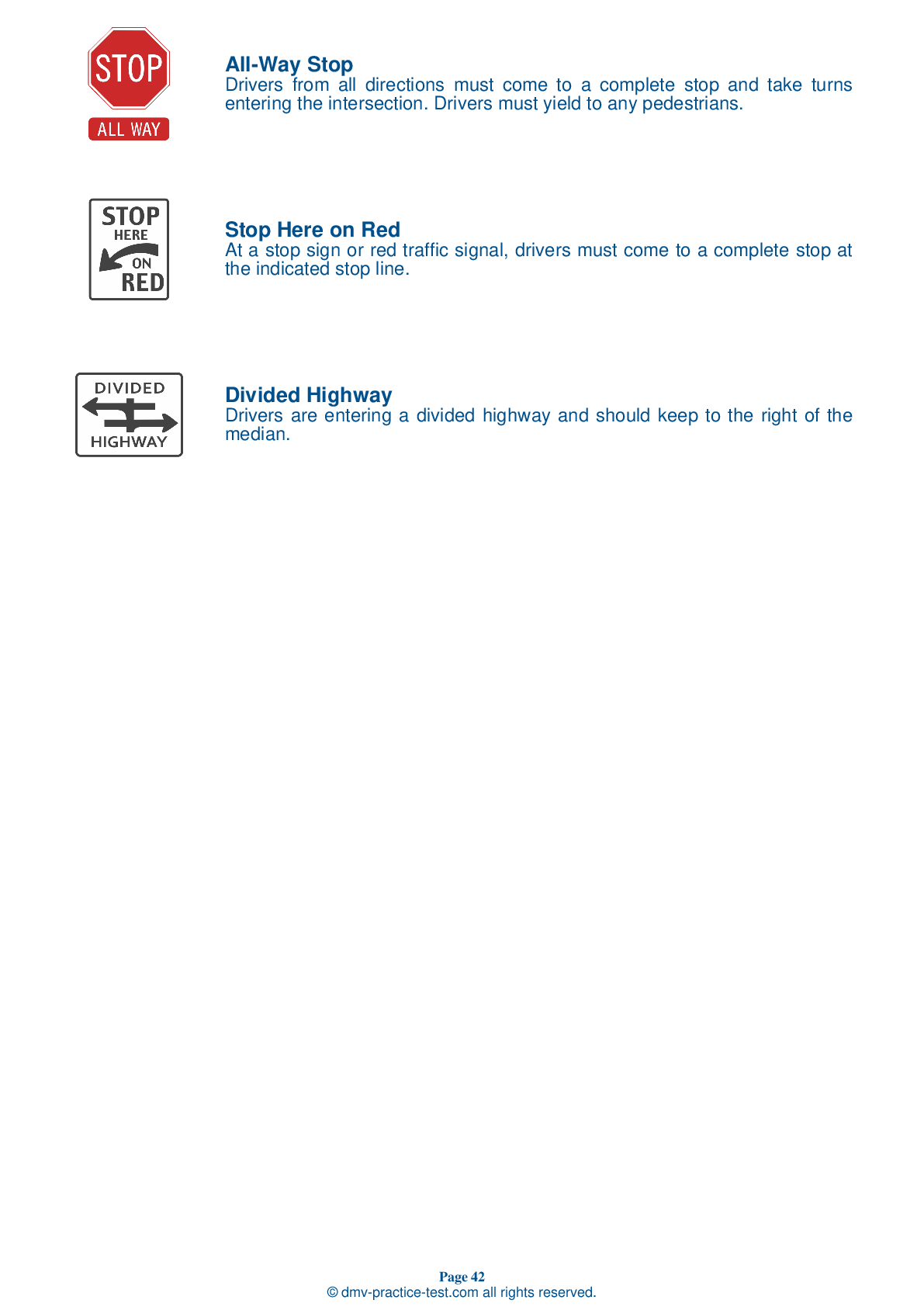FREE Indiana DMV Practice Test #21 Page 4 of 5
This set of Indiana DMV practise tests has been updated for January 2025. It includes questions based on the Indiana Driver Handbook's most significant traffic signals and laws for 2025. Use actual questions that are very similar (often identical!) to the DMV driving permit test and driver's licence exam to study for the DMV driving permit test and driver's licence exam.
On the practise exam, each question gets a tip and explanation to help you remember the concepts. The written component of the official Indiana DMV test will include questions about traffic rules, traffic signs, and driving statutes, as well as information from the Driver Handbook.
To obtain a passing grade, you must correctly answer 44 of the 50 questions. Take our DMV practise exam to help you prepare for your Indiana instruction permit or driver's licence.
The DMV exam is available in several languages.
Using any kind of testing assistance will result in an automatic fail, and the DMV may take additional action against your driver's licence, so stay away from it.
28 . Allowing a space cushion between your vehicle and its surroundings is important because it:
The only way to be sure you will have enough time to react to mistakes made by other drivers is to leave plenty of space between you and the vehicles around you.
29 . Points assessed against your license will remain on your driver record for:
Indiana uses a point value system to discourage traffic violations. Points assessed against your license will remain on your driver record for two years from the date of the conviction.
30 . The consumption of alcohol while taking drugs can:
The combination of alcohol and drugs, in some cases, can increase the effects of both the drugs and alcohol. It can be unsafe to drive after consuming either alcohol or drugs and is even more dangerous after combining them.
31 . A flashing yellow light at an intersection means that you should:
A flashing yellow light at an intersection means "caution." If you approach such a light, slow down, look, and proceed with care.
32 . This sign means:
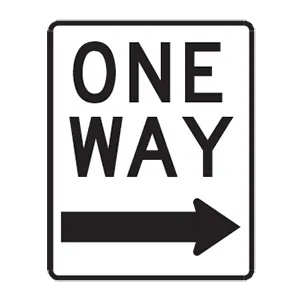
Regulation signs regulate traffic speed and movement, displaying rules which drivers must obey. This sign tells drivers the direction in which they must drive when turning onto a one-way street.
33 . This is a ____ sign.
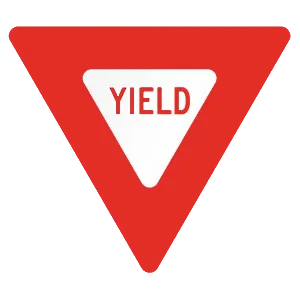
This triangular sign is a "Yield" sign. When you see this sign, you must slow down to check for traffic and yield the right-of-way to pedestrians and approaching cross traffic. Stop only if it is necessary to do so.
34 . A single broken yellow line down the center of a two-lane road indicates:
Yellow lines are used to separate traffic moving in opposite directions. Dashed lines indicate that drivers directly next to the line are permitted to pass when it is safe to do so.
35 . When turning right at a red traffic light, you should:
To turn right at an intersection that is controlled by a red traffic light, you must first come to a full stop. Check to make sure that there are no vehicles or pedestrians in or about to be in the path of your turn. Make sure there is no sign posted to prohibit the turn.
36 . If your car starts to skid, turn your steering wheel:
If your vehicle goes into a skid, you should turn the steering wheel in the direction you want the vehicle to go. As soon as the vehicle begins to straighten out, turn the steering wheel back the other way.
37 . This road sign means:
